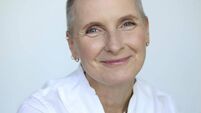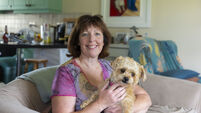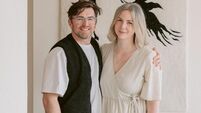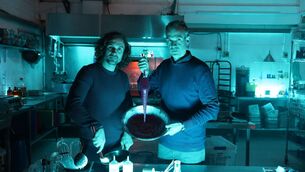My aunt's breast cancer diagnosis saved me — it showed me how to be vigilant
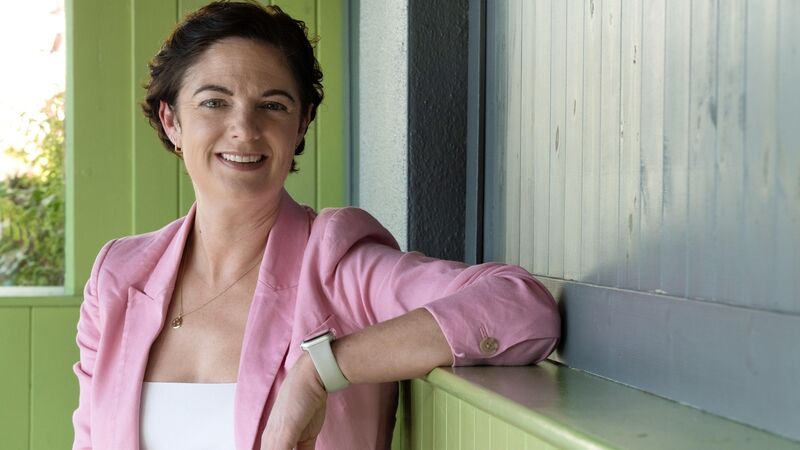
Just months shy of her 40th birthday, Katie Browne was diagnosed with breast cancer. Her aunt’s similar diagnosis months previously had prompted extra checking and vigilance.
Just months shy of her 40th birthday, Katie Browne was diagnosed with breast cancer. Her aunt’s similar diagnosis months previously had prompted extra checking and vigilance.
There’s a history of breast cancer in the family: Browne’s mother was diagnosed 18 years ago. “Because of my mom’s diagnosis, my aunt, who is my mom’s sister, was being monitored and was diagnosed in early 2023,” Browne, a Kerry native, says. “This news prompted my mom to advise me to be vigilant. I went to my GP and mentioned my aunt’s diagnosis and she did a breast check. She found a very small lump and referred me to the breast clinic in St James’s Hospital, Dublin.”
This was in April of 2023. Two weeks later, Browne had a mammogram at St James’s breast-care unit. “After that initial mammogram, they said they’d call me if I needed to go back in, and, by that afternoon, I got that call to come back for what’s called a triple assessment: mammogram, ultrasound, and biopsy.
“During the ultrasound, you get an indication of what you’re dealing with. I was told there was good news and bad news: The good news was that my lymph nodes were clear, but the bad news was that the lump was suspicious.”
Her biopsy sample was sent off for tests to determine if this suspicious lump was cancer. A self-confessed “positive Polly”, Browne found waiting for results particularly challenging. “You’re playing a waiting game at every stage: Waiting for appointments, waiting for tests, waiting for test results. But then, ten days later, I received official confirmation that I had cancer. Despite having some kind of understanding that it could be cancer, hearing the words ‘you have cancer’ was so upsetting and difficult to hear.”
And so began another bout of waiting. “The [oncology team] has to be thorough and go through all the different variables,” Browne says. “They did more tests to come up with a plan to treat my particular [cancer]. It’s more waiting, but you just have to accept that — the waiting is part of it.”
Her doctors drew up a comprehensive plan: surgery to remove the lump (a lumpectomy), test results and treatment — chemotherapy and radiation — and preventative treatment.
The surgery took place in early June. “It went well, and I recovered well,” she says.
Fertility fears
But there was something else to consider. Browne didn’t have children, and as she progressed towards chemotherapy, which can affect fertility, she had a decision to make. “My cancer nurse told me that I could avail of one round of fertility treatment that would be government-funded. Wrapping my head around this was difficult, given everything else I was going through.”
She decided to undergo one round of IVF. She was unhappy with how many eggs they retrieved and opted for a second round. Between those two rounds of IVF, Browne got the news she’d been dreading. “My oncology team told me that I would need to have chemotherapy. That was the hardest day for me. I knew what that meant. I knew how sick I’d be. I knew I’d lose my hair.”
The second round of IVF resulted in higher egg retrieval. “Although the fertility treatment was difficult, especially because I was also getting ready to start chemo straight after, it was a relief to know that I would still have the possibility of having a family one day,” says Browne.
The chemotherapy and radiation were gruelling. “I was very sick, and I lost my hair, and, for me, that was a big thing — I was bald for my 40th birthday. It’s growing back now, but it does all sorts of things; it’s wild and curly. I never had hair like that before. During treatment, I found myself looking in the mirror and thinking, ‘When will I look like me again?’ But I got through it and I’ve come out the other end.”
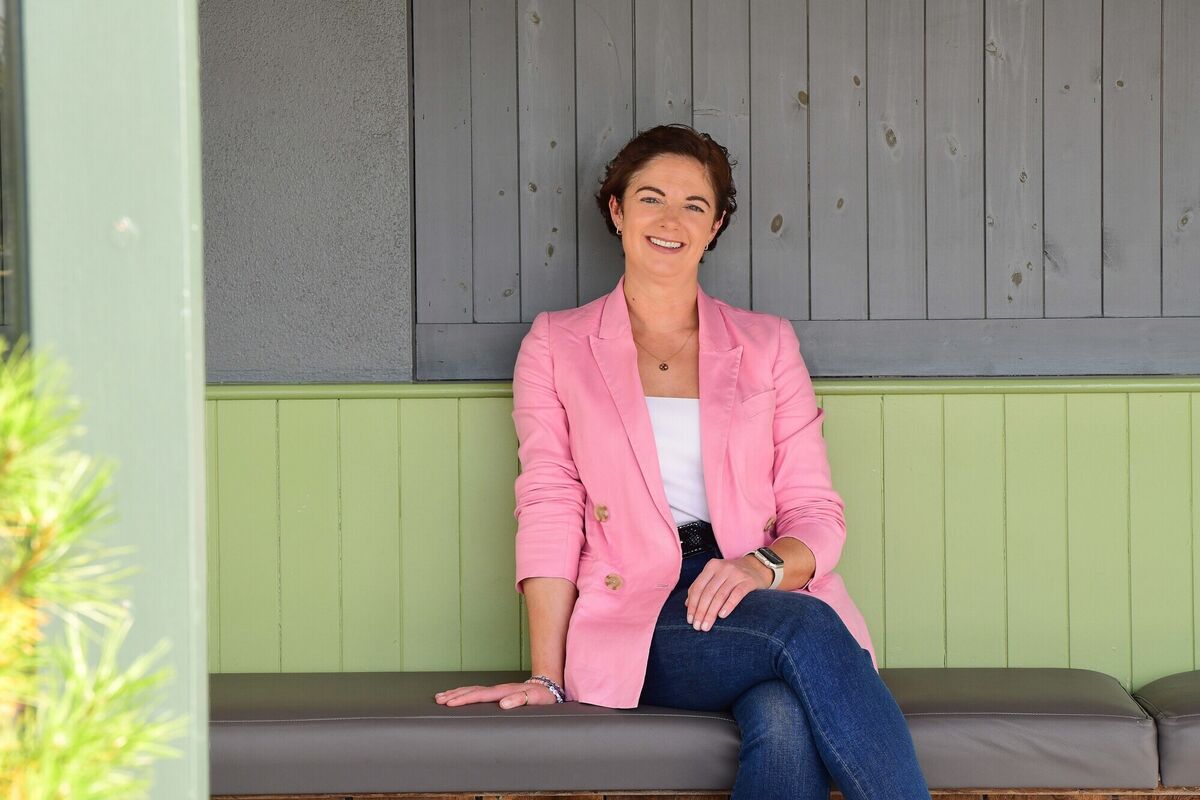
From April 2023, when her GP first found the lump, Browne says her cancer journey was a whirlwind. “The whole process was wrapped up in eight months. That early intervention, finding the lump when it was so small, was so valuable, and it means I have so much more of my life to live.”
Now cancer-free, she wants to celebrate the little things. “I was always very fit and I’m working hard at returning to how fit I was before last year. I ran a half-marathon earlier in the year and raised €4,500 for the Irish Cancer Society — it felt like a comeback.”
She celebrated her 41st birthday and enjoyed a weekend at Electric Picnic during the summer; a special few days for Browne and her friends. “At the same time last year, I was sitting on a beach with my best friend. I was in the middle of my treatment, and she had just finished her cancer treatment.
“We talked about how we’d love to go to Electric Picnic one day. Then we just said, ‘Let’s book for next year’, and we did. And so this year, six of us went and had a wonderful time.”
She has returned to work and considers herself lucky. “I often say my aunt saved me; without her diagnosis, I may not have found the lump for another while, and my story might be very different.” Early medical intervention was critical and she encourages women to be vigilant. “I know checking your breasts can feel scary sometimes, or you just get out of the habit of it, but it can make all the difference, and by checking regularly, you can more easily notice any changes in your breasts.”
Check once a month
Cancer nurse with the Irish Cancer Society Carol Spillane reiterates Brown’s advice. “You should aim to do a breast exam once a month, ideally on the same day every month. Put a reminder in your phone. It’s about ‘look and feel’, so you need to first look at your breasts in the mirror: You’re looking for dimpling, puckering, the nipple pulling in, and a change in the size of your breasts.
“When examining your breasts, I advise people to lie down, supported by pillows, so you’re not flat. Using the fat pads of your fingers, check your breasts in a circular direction, starting at your collarbone and working around like the face of a clock. Make sure to check in your armpit by getting your fingers right in and pulling them back down to feel for any lumps, and check around your collarbone, too.”
Each year, more than 3,400 women are diagnosed with breast cancer in Ireland. Spillane says no matter what you discover during your breast exam, a change or a suspicious lump, it’s critical to take action.
“Don’t procrastinate. Visit your GP, and if they think there’s something concerning, they will refer you to a breast clinic.”
- October is Breast Cancer Awareness Month. The Irish Cancer Society is calling on the public to host a Big Pink Breakfast to raise vital funds for breast cancer patients and their families. Visit cancer.ie/pink to learn more

Unlimited access. Half the price.
Try unlimited access from only €1.25 a week
Already a subscriber? Sign in
CONNECT WITH US TODAY
Be the first to know the latest news and updates

Celebrating 25 years of health and wellbeing



